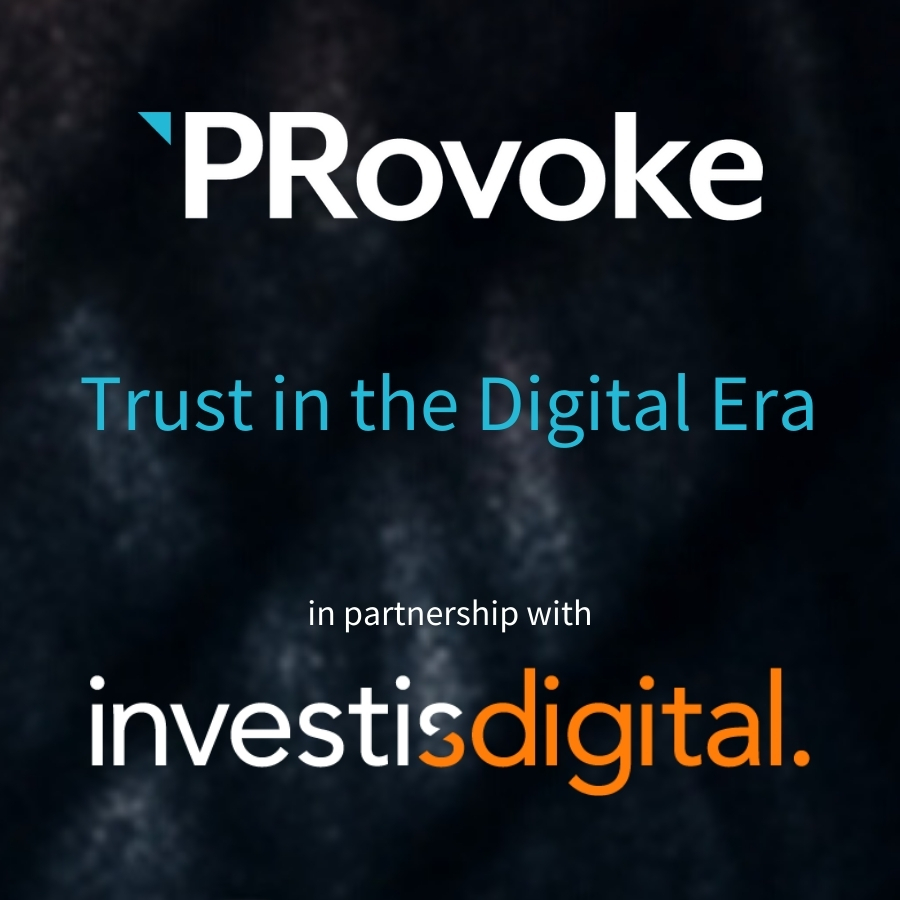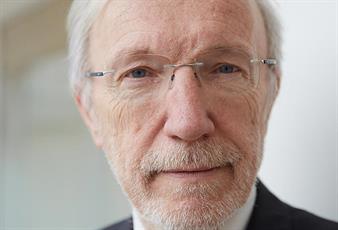Mark Henricks 03 Feb 2021 // 5:24PM GMT

The list of casualties of 2020 ranges from lost human lives to lost sports seasons, and is as long and wrenching as it is diverse. And one of those casualties, it’s becoming increasingly clear, is trust. Edelman’s 2021 trust barometer survey reveals epic drops in the level of trust enjoyed by governments and government agencies, non-governmental organizations, journalists, religious figures and, last but not least, businesses.
That’s a problem. In normal times trust eases the work of communicators building relationships with stakeholders. When chaos seems to reign almost unchecked and communication is largely limited to digital channels, cultivating and maintaining trust with brand stakeholders is even more critical, says Luke Bishop, vice president and client partner with Investis Digital.
“There’s just so much uncertainty in the world from every point of view,” he says. “Whether you’re an investor, a customer, if you’re coming out of university looking for a job, or if you already have a job — what does next year look like? Will I have a job next year? Will I have an investment? Will I have an investor? Will I have a product to buy? Will I have a customer?”
Ironclad answers are hard to come by, of course. But a brand can reliably boost stakeholder trust in its consistency and staying power if the brand develops and demonstrates authentic purpose, says Rachel Zahn, vice president of marketing and sales optimization for Investis Digital.
Organizations with a clear purpose, clearly communicated, are the ones that people trust, she says.
“There is no playbook for what we had to endure,” Zahn notes. “From HR to IR to corporate PR, everyone is writing the playbook as we go through it. And when there’s no playbook, where do you turn for direction? You go back to why? Why do you get up in the morning?”
Brands are reaching the same realization. And it’s appropriate that purpose has become a hot topic in communications, according to Daniel Bassali, managing director in the digital department for Plus Communications. “As long as your movement or cause has values that are consistent with the core values you preach about, your campaign — if executed properly — will be successful,” Bassali says. “It’s the basic arithmetic of a good PR campaign.”
Bishop agrees, “It’s important for all of us to focus on what is our purpose in this world,” he says. “Now more than ever it’s important that we become clear on who we are as individuals and how that looks in a greater corporate framework and that we talk about why we do this.”
During Covid, brands have relied heavily on digital channels, particularly social media and websites, to build trust by talking about their purpose. Bishop says communicating digitally is about more than creating a website.
“The website should never be the starting point,” Bishop says. “The conversation should be focused around what the company is trying to achieve and how communication plays a part. We always start with, ‘What is your message, what is the content that needs to be created to deliver that message and how should that be created – as video, as infographic, as press release, as an image?’”
Next, they discuss where to distribute the message, such as via a website, blog, social, etc. “The whole point is showing that your message connects and resonates with the key audience in a way that they engage with it, are on board with you, trust you and create action,” Bishop adds.
Broad themes often connect to social responsibility, sustainability and generally doing more than simply turning a profit. Bassali urges brands to avoid overelaborate purpose. “Organizations need to boil everything down to just one core value that you can use to basically validate or explain every activity and action that an organization takes and really center every single piece of messaging you put out there,” he says.
Finding the right spokespeople to present your message is also a weighty concern. Sometimes, according to Bret Werner, president of MWW, the right spokesperson may be sitting in the corner office. “Consumers expect to hear from brand leadership during these periods,” Werner says. “They want to hear from your leaders.”
At Investis Digital, the firm’s Connected Content strategy can encompass all these elements. It’s based on four premises, including the primacy of having engaging and meaningful content, the central importance of security, the need to invest so audiences can find content and, finally, the role of measurement and benchmarking. In a different format, Bishop summarizes these pillars as “tell it, build it, run it and find it.”
A recurring theme of the pandemic has been accelerating and amplifying changes, such as remote working, that were already in process. Add to that list the primacy of purpose, which, Bishop points out, has always been important.
“The most successful companies pre-2020 were already focusing on purpose and doing it in a way that really matters,” he says. “Look at Amazon, Apple, Nike, and Unilever. These are all hugely successful companies. Pre-2020 they were all focusing on purpose.”
Even if Covid’s long-term impact eventually fades, Zahn points out that demographic changes are here to stay. And for Gen Z, she maintains, purpose is critical. “This is the next round of talent companies are looking to recruit and hire,” she notes. “If companies don’t have a purpose, they would rather go to work for a competitor that does. That’s a problem if you’re trying to build a long-term sustainable business.”
Brand leaders are increasingly understanding that, because of the impact on talent and other areas, purpose affects every measure of success. “It impacts the bottom line,” Zahn says. “It impacts supply chain. It affects consumers. It has a ripple effect. The executives at the top know it matters.”
As the importance of both purpose and digital channels mushrooms, so does the number of audiences brands are trying to reach. Over the past two years, the corporate audiences that the PR industry has traditionally been interested in is “now expanding to employees, shareholders, investors, consumers, influencers, analysts and media,” Zahn says. “You can’t just focus on one audience because the needs of each audience are very different.”
The employee audience is getting lots of attention these days. There are a number of reasons for that. One, says MWW’s Werner, is that other audiences are watching. “Consumers and stakeholders think that prioritizing the welfare of employees is very important when they buy,” he says. Employees who are treated well will be bigger brand advocates, he adds. “So, it all goes hand in hand.”
Another angle: Employees have to buy in to the purpose you choose. “It’s one thing for the leadership team to say we’re moving to be a purpose-driven company,” Bishop says. “But the only way you’re going to truly be a purpose driven company is if employees come to work every day being purpose-driven. If they continue going about their business in their pre-2020 mindset, your company is not going to change.”
Under social distancing, websites, virtual town hall events, webcasting and other digital communication can keep employees in the loop. Ultimately, brands can best increase employee engagement by always keeping employees in when creating messaging. “Make sure there are words within the website that speak to employees and make it clear,” Bishop says. “It’s hugely important to involve employees.”
Purpose is not a no-risk strategy. Being inauthentic about purpose, in fact, is a high-risk strategy almost guaranteed to perform poorly. Don’t think you can hide a fake purpose, Bishop warns. “At the end of the day, influencers and media have more surveillance technology than the brands that we speak with,” he says. “They’re going to find out one way or another.”
One sure way to strike a false note is by adopting a purpose because it’s trendy, not because it connects to a brand’s core values, Bassali warns. “It’s transparently inauthentic,” he warns. “When they do that, it’s the most common way of getting in trouble and putting your foot in your mouth.”
Security is far from a peripheral concern in all this. Zahn likes to think of it in terms of Maslow’s Hierarchy. “If I don’t have basic safety and security, if my data and credit card information isn’t with you, I don’t care anything about your purpose,” she says. For that reason, brands have to address data security if digital communications about purpose are to be trusted.
At this point, 2019 may seem like it happened a lot longer than a year ago. That’s because so many lasting changes have occurred in a short time. And one of those is the arrival of trust and purpose as enduring themes when communicating digitally. In Werner’s view, that’s a lasting change.
“Trust is an evergreen topic,” Werner says. “Trust is always vital. It’s more omnipresent now because the trust levels are so low in our society. But it’s always a vital component. And I think purpose will be vital too.”
Audiences are going to keep purpose front and center, Bishop agrees. “After 2020, we can’t just go back to not focusing on purpose,” he says. “Once you start talking about purpose, your market will hold you to it.”
For her part, Zahn sees this year of crisis as more than just a problem, as profound as the problems it has raised may be. It’s also a spur to change, she says, and a chance to reshape brand communications for the better, around purpose.
“As Winston Churchill said, ‘Don’t let a good crisis go to waste,’” she says. “Any business that doesn’t use all that 2020 has served up as a springboard to push their purpose forward has lost out on a huge opportunity.”


































.jpg)


















